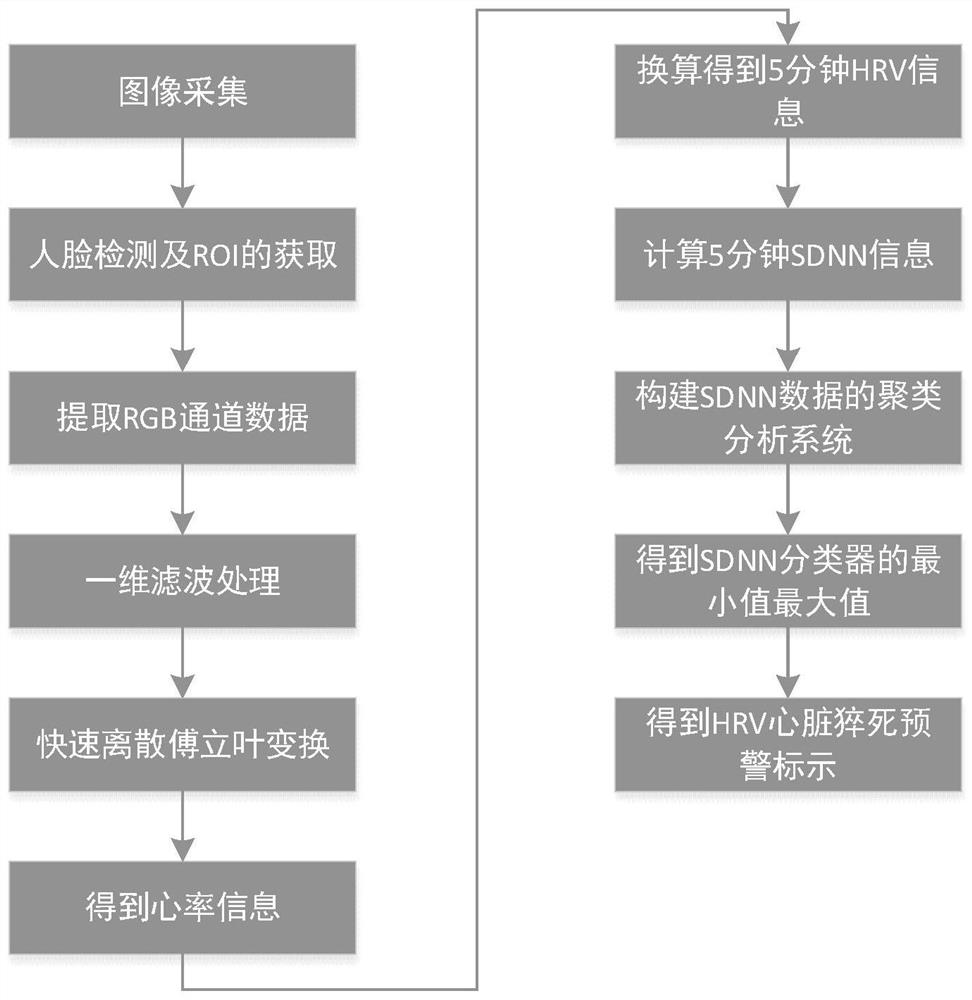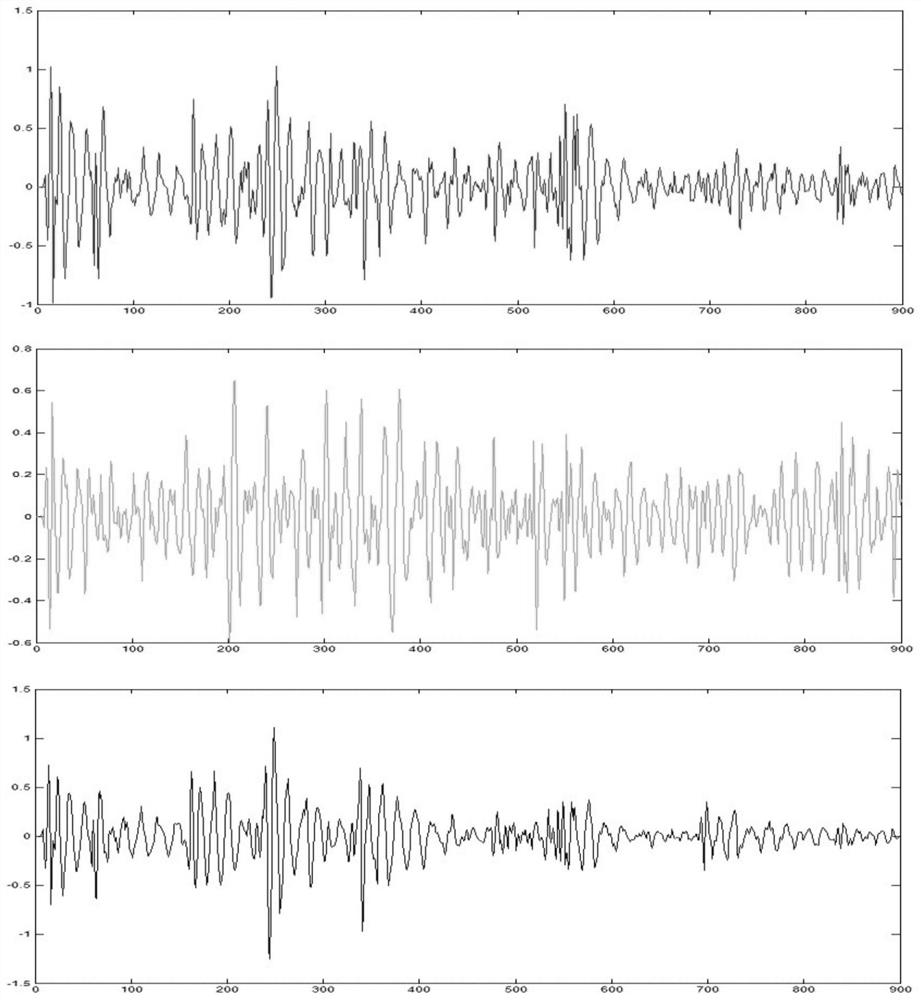Remote sudden cardiac death early warning method based on non-contact
A non-contact, cardiac technology, applied in the measurement of pulse rate/heart rate, medical science, diagnostic signal processing, etc., can solve problems such as difficult determination of model order, not very smooth spectral lines, complex modeling process, etc.
- Summary
- Abstract
- Description
- Claims
- Application Information
AI Technical Summary
Problems solved by technology
Method used
Image
Examples
Embodiment Construction
[0062] The present invention will be described in detail below in conjunction with the accompanying drawings.
[0063] The present invention provides a remote sudden cardiac death early warning method based on non-contact, including the following process:
[0064] 1) Image acquisition
[0065] The video used was filmed indoors, illuminated by sunlight shining through a window. Participants sat about 40 to 50 centimeters in front of a laptop with a built-in camera, sat quietly, breathed naturally, and took videos facing the camera. While shooting the video, the pulse of the participant is measured with a physical measuring instrument, which is used to compare the accuracy difference with the final test result. The captured videos are captured in 24-bit RGB true color, at a frame rate of 15 frames per second, and at a pixel resolution of 1920×1080.
[0066] 2) Face detection and ROI acquisition
[0067] Use deep neural network to detect face area as ROI (Region of Interest)....
PUM
 Login to View More
Login to View More Abstract
Description
Claims
Application Information
 Login to View More
Login to View More - R&D
- Intellectual Property
- Life Sciences
- Materials
- Tech Scout
- Unparalleled Data Quality
- Higher Quality Content
- 60% Fewer Hallucinations
Browse by: Latest US Patents, China's latest patents, Technical Efficacy Thesaurus, Application Domain, Technology Topic, Popular Technical Reports.
© 2025 PatSnap. All rights reserved.Legal|Privacy policy|Modern Slavery Act Transparency Statement|Sitemap|About US| Contact US: help@patsnap.com



